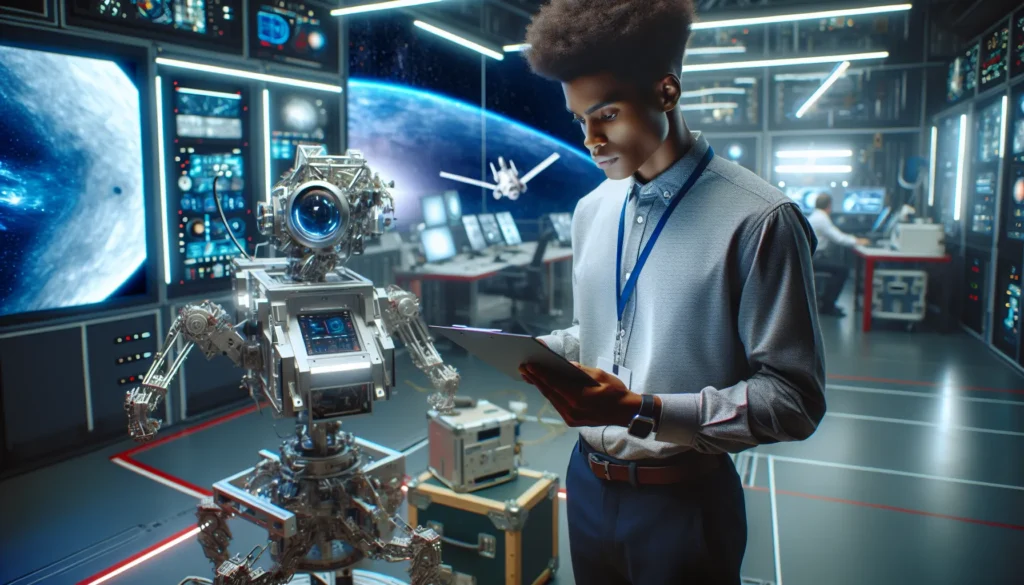Table of Contents
ToggleWhen you think about space, you might picture astronauts floating around in shiny suits or distant planets just waiting to be explored. But behind those cosmic adventures lies some seriously cool technology that’s not just for the stars—it’s also changed life on Earth in surprising ways.
Take a moment to appreciate how innovations like memory foam and satellite communication have roots in space exploration. These advancements didn’t just help astronauts survive the vacuum of space; they’ve made our lives a whole lot cozier and more connected. Buckle up as we dive into two stellar examples of technology that started in the great beyond and landed right in our everyday lives. Who knew space could be so down-to-earth?
Example One: Satellite Technology
Satellite technology plays a crucial role in space exploration and has vastly transformed communication on Earth. Significant advancements in satellite capabilities enhance lives globally.
Overview of Satellite Development
Satellite development began with the launch of Sputnik 1 in 1957, marking humanity’s first step into space. Over the decades, organizations like NASA and ESA have significantly advanced satellite engineering. Innovations include miniaturization and improved power systems, enhancing efficiency. Double the number of satellites orbit Earth today compared to ten years ago, demonstrating rapid growth in this field. Surveillance, scientific research, and telecommunications now rely on advanced satellite technology.
Applications of Satellite Technology
Satellite technology has diverse applications, impacting various sectors. In telecommunications, satellites facilitate global broadcasting and internet services, connecting remote areas. Weather forecasting benefits significantly from satellites, providing real-time data to predict severe storms. Navigation systems like GPS rely on satellite signals for precise location tracking. Additionally, earth observation satellites monitor environmental changes, aiding in disaster response and resource management. The applications of satellite technology are extensive, showcasing its importance in modern society.
Example Two: Space Rovers
Space rovers represent a significant technological advancement in space exploration, exploring terrains where humans cannot safely tread. These robotic vehicles gather data and relay information back to Earth, providing invaluable insights into celestial bodies.
History of Space Rovers
The journey of space rovers began with the Sojourner, deployed by NASA in 1997 during the Mars Pathfinder mission. Following this, the Mars Exploration Rovers Spirit and Opportunity launched in 2003, setting a new standard for planetary exploration. Notable developments continued with the Curiosity rover in 2012, equipped with advanced scientific instruments. Current missions include the Perseverance rover, which landed on Mars in February 2021, demonstrating ongoing innovation in rover technology.
Impact of Space Rovers on Exploration
Space rovers revolutionize our understanding of other planets and moons. They analyze soil samples, capture images, and conduct experiments that reveal the geological history of these celestial bodies. Data collected helps scientists assess past conditions for habitability and search for signs of life. Each mission expands knowledge about the solar system, leading to breakthroughs in space science. These robotic explorers ensure that human curiosity and expertise extend far beyond Earth, paving the way for future exploration.
Future of Space Technology
Emerging innovations in space technology promise to reshape life on Earth and beyond. One area of focus is the development of advanced propulsion systems, designed to reduce travel time to distant planets. Technologies like ion propulsion enable spacecraft to operate more efficiently, potentially cutting journey durations to Mars and beyond significantly.
Artificial intelligence (AI) plays a critical role in the future of space exploration. AI systems enhance autonomous navigation for spacecraft, managing complex tasks without human intervention. By harnessing machine learning, these systems analyze vast amounts of data, aiding in real-time decision-making and improving mission success rates.
Another promising frontier involves in-situ resource utilization (ISRU). This technology allows for the extraction and use of local resources on celestial bodies, such as water from the Moon or Mars. ISRU advancements could support long-term human habitation by producing essential materials on-site rather than relying solely on supplies from Earth.
The field of biotechnology also shows potential for space applications. Researchers explore ways to grow food in microgravity, addressing the challenge of sustainable life support during extended missions. Strategies for optimizing plant growth in space could lead to breakthroughs in agricultural practices on Earth.
Robotic exploration continues to be a cornerstone of future missions. Enhanced robotic systems may revolutionize the study of asteroids and comets, providing insights into the solar system’s origins. These machines can carry out complex tasks, such as assembling structures or processing raw materials, paving the way for human missions.
Space tourism represents another exciting evolution in space technology. Companies are innovating to develop spacecraft for commercial flights, opening opportunities for private individuals to experience space travel. Increased competition in this sector may accelerate advancements, making space exploration more accessible.
Innovations in miniaturization also offer significant advantages. Smaller satellites and instruments decrease launch costs and improve deployment efficiency. As this technology evolves, the ability to gather more data from various sources will enhance scientific research and global communication.
Future advancements in space technology continue to build on the lessons learned from past missions. By developing efficient systems, leveraging AI, and exploring new frontiers, humanity’s capacity for space exploration will expand dramatically.
The advancements in satellite technology and space rovers exemplify the profound influence of space exploration on everyday life. Satellites have revolutionized communication and navigation, connecting people globally and enhancing services like weather forecasting. Meanwhile, space rovers have opened new frontiers in planetary exploration, providing invaluable data that deepens our understanding of the solar system.
As technology continues to evolve, the applications of these innovations will likely expand further. The ongoing development in space technology not only enriches scientific knowledge but also enhances the quality of life on Earth. Embracing these advancements paves the way for a future where the boundaries of exploration are continually pushed.





